19th October 2008 : Commiphora Munchers
 Sunday, October 19, 2008 at 05:47PM
Sunday, October 19, 2008 at 05:47PM Watering our saplings around the house has also brought some of the established trees and flowers into blossom and fruit earlier than usual, including the commiphora trees in the thicket beyond the kitchen.
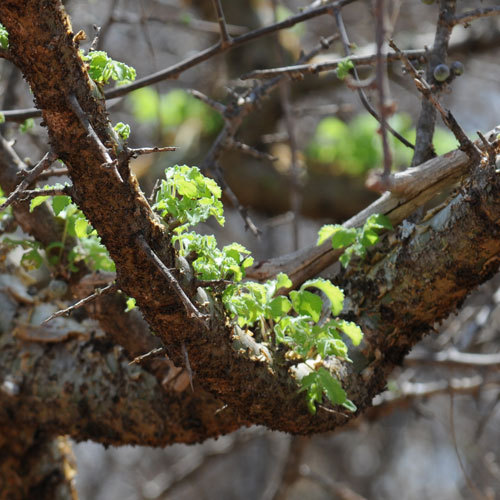 Delightfully bright green new commiphora leaves
Delightfully bright green new commiphora leaves
This unseasonal blooming has naturally attracted a host of animals and insects which are enjoying an early feast (including the bees, which I mentioned in an earlier post - wonderful to see so many around again). The commiphora berries have a hard green outer shell, which once broken, reveals a juicy red fruit within, which is much loved by bulbuls, hornbills and tree squirrels alike...
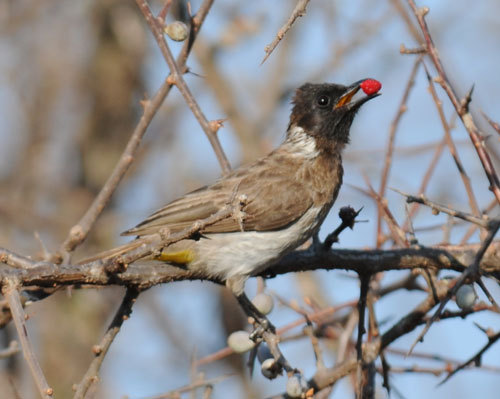 A Yellow-vented (aka Common) Bulbul enjoying a succulent commiphora berry
A Yellow-vented (aka Common) Bulbul enjoying a succulent commiphora berry
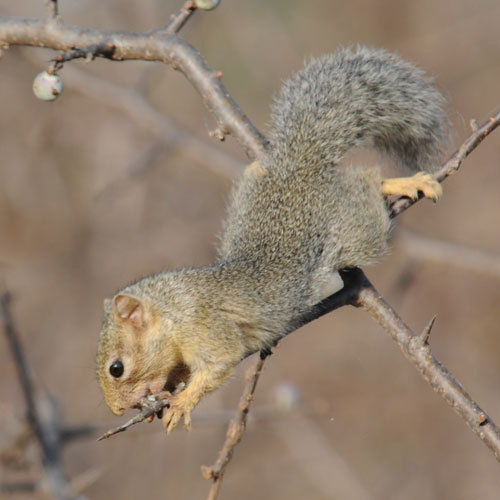
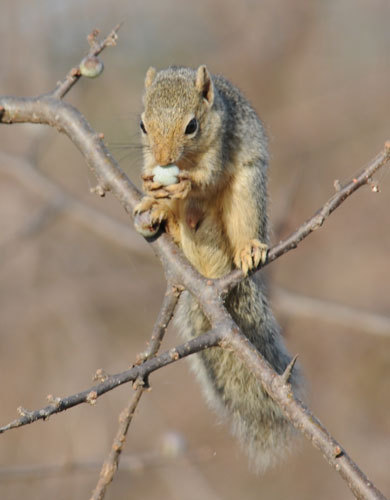 This tree squirrel adeptly takes advantage of the unexpected bonanza...
This tree squirrel adeptly takes advantage of the unexpected bonanza...
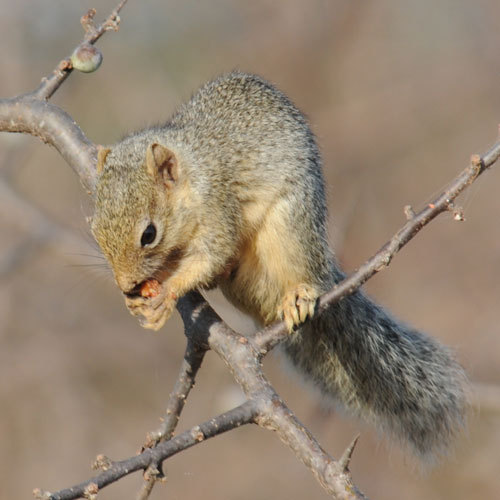
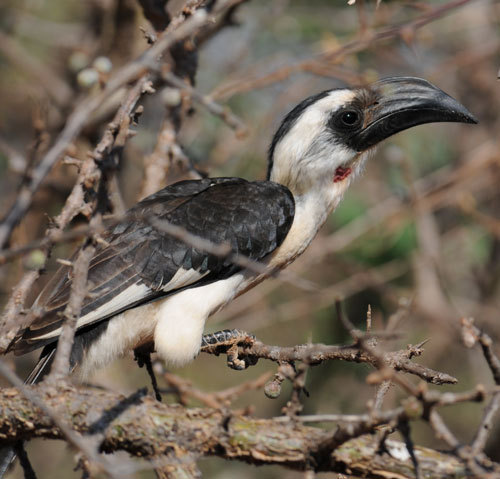
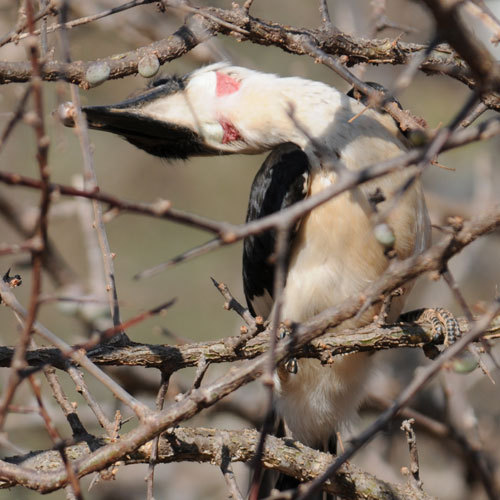
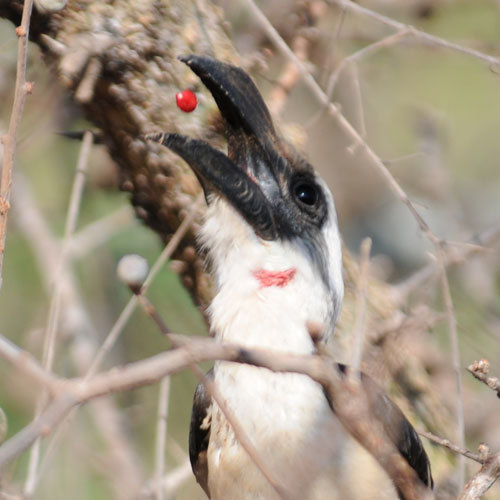 Hornbills love fruit, and this female Von der Decken is no exception, deftly picking off suitable berries, de-husking them and tossing them precisely in the air before catching them in her long beak...
Hornbills love fruit, and this female Von der Decken is no exception, deftly picking off suitable berries, de-husking them and tossing them precisely in the air before catching them in her long beak...
Whoever would have thought a sunbird would eat fruit? I always think of them as nectar-eaters...but the unusual Eastern Violet-backed Sunbird (who one could say is a clever bird, for it often builds its nest near a wasp nest for protection) has been tucking into the commiphora berries like there's no tomorrow, prying open the green husk with its shorter-than-usual beak:
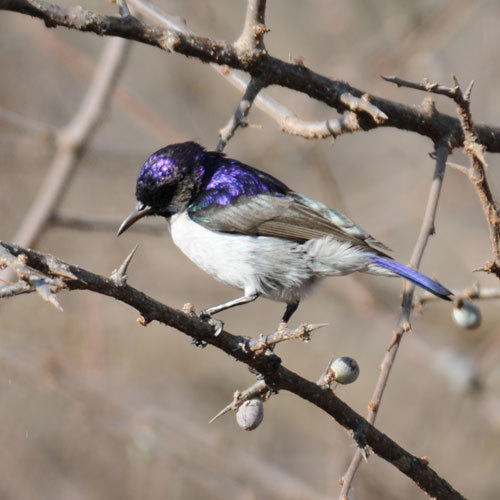
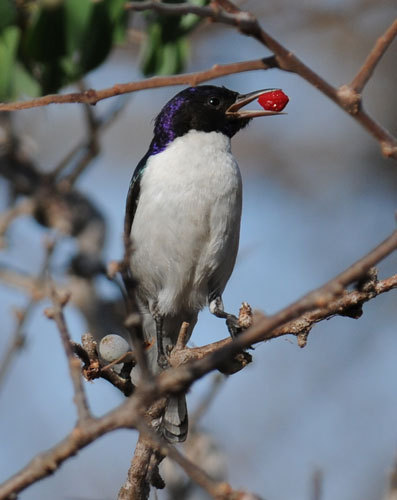
All this activity certainly gives me something interesting to watch from the window while I peel potatoes and do other otherwise menial jobs in the kitchen!
Find me elsewhere on the web:
Dezine Design Creative Hub | My Art & Photos on Gifts & Apparel | Fine Art & Photo Prints |
African Environmental Film Foundation





Reader Comments